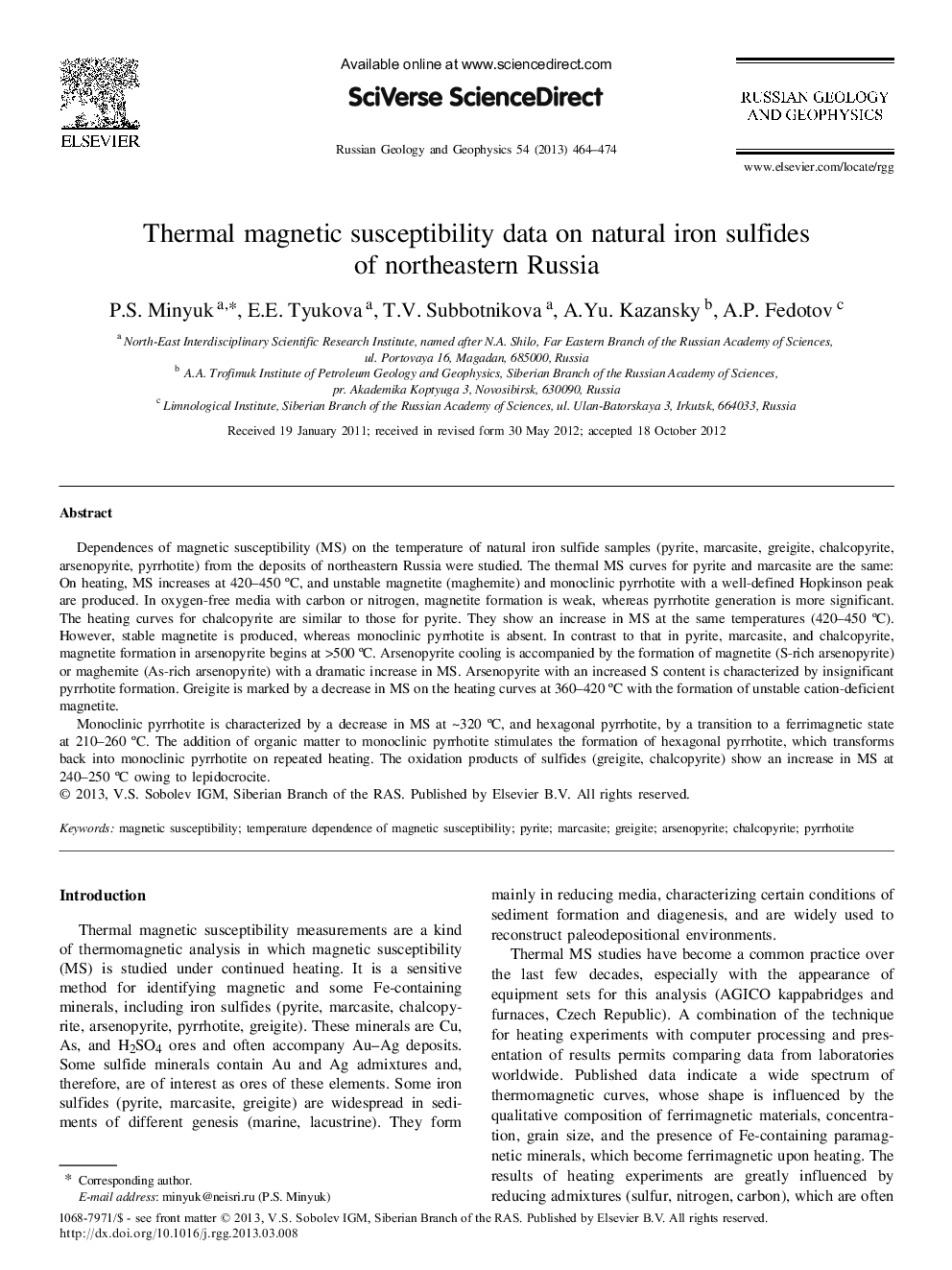| Article ID | Journal | Published Year | Pages | File Type |
|---|---|---|---|---|
| 4739251 | Russian Geology and Geophysics | 2013 | 11 Pages |
Dependences of magnetic susceptibility (MS) on the temperature of natural iron sulfide samples (pyrite, marcasite, greigite, chalcopyrite, arsenopyrite, pyrrhotite) from the deposits of northeastern Russia were studied. The thermal MS curves for pyrite and marcasite are the same: On heating, MS increases at 420–450 °C, and unstable magnetite (maghemite) and monoclinic pyrrhotite with a well-defined Hopkinson peak are produced. In oxygen-free media with carbon or nitrogen, magnetite formation is weak, whereas pyrrhotite generation is more significant. The heating curves for chalcopyrite are similar to those for pyrite. They show an increase in MS at the same temperatures (420–450 °C). However, stable magnetite is produced, whereas monoclinic pyrrhotite is absent. In contrast to that in pyrite, marcasite, and chalcopyrite, magnetite formation in arsenopyrite begins at > 500 °C. Arsenopyrite cooling is accompanied by the formation of magnetite (S-rich arsenopyrite) or maghemite (As-rich arsenopyrite) with a dramatic increase in MS. Arsenopyrite with an increased S content is characterized by insignificant pyrrhotite formation. Greigite is marked by a decrease in MS on the heating curves at 360–420 °C with the formation of unstable cation-deficient magnetite.Monoclinic pyrrhotite is characterized by a decrease in MS at ∼ 320 °C, and hexagonal pyrrhotite, by a transition to a ferrimagnetic state at 210–260 °C. The addition of organic matter to monoclinic pyrrhotite stimulates the formation of hexagonal pyrrhotite, which transforms back into monoclinic pyrrhotite on repeated heating. The oxidation products of sulfides (greigite, chalcopyrite) show an increase in MS at 240–250 °C owing to lepidocrocite.
